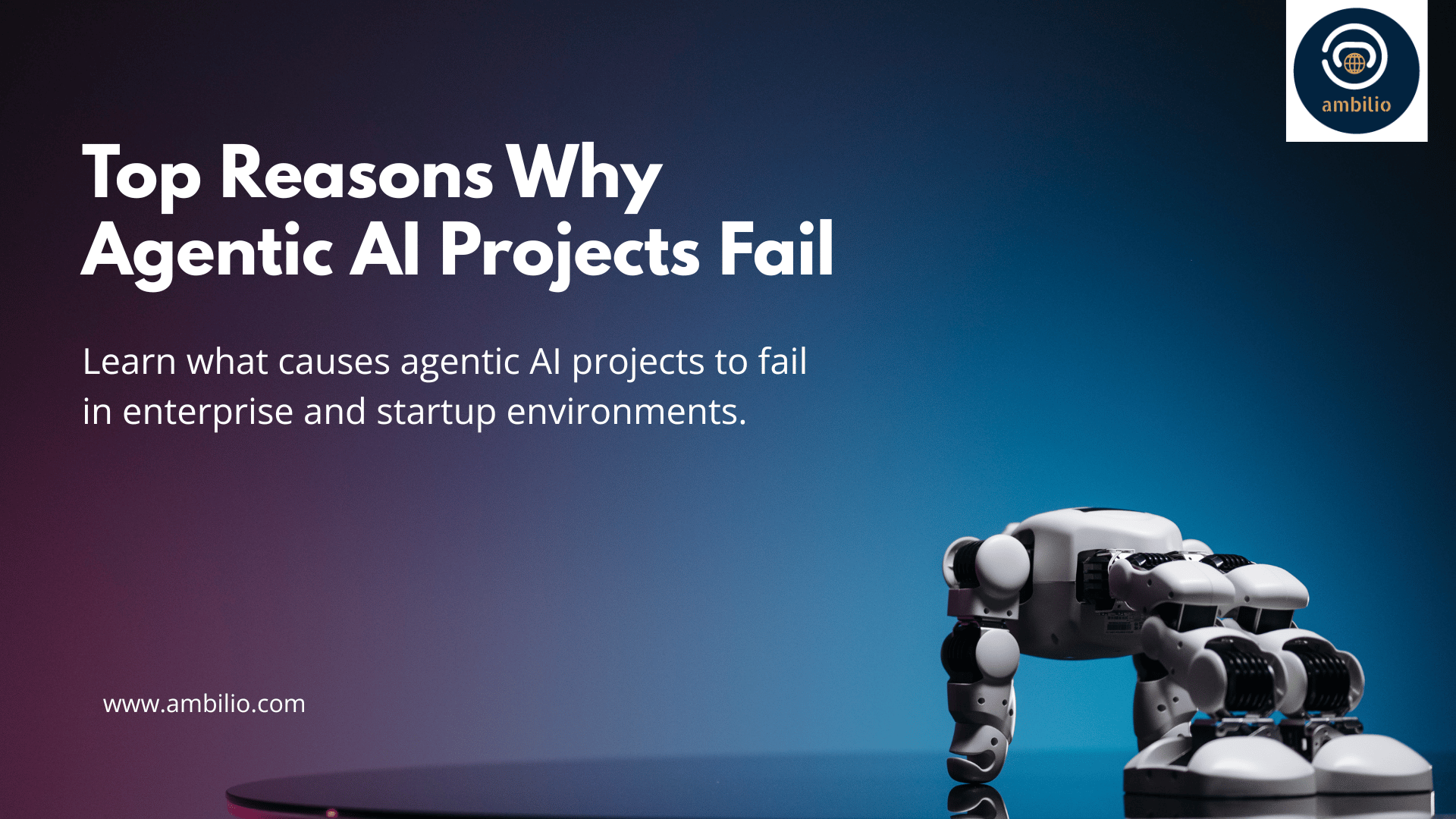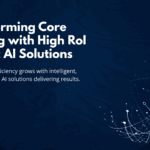Agentic AI systems—those that can reason, plan, and act autonomously using tools—are fast becoming essential in enterprise automation, workflow optimization, and smart decision-making. They promise efficiency, scalability, and reduced manual intervention. However, many organizations find that their agentic AI initiatives fall short in practice. Teams invest time and money into developing intelligent agents, only to encounter unpredictable behavior, task failures, or outright project abandonment. This article presents a detailed look at why agentic AI projects fail, drawing from real-world challenges and implementation experiences. We will discuss ten key reasons behind such failures and offer insights into how these pitfalls can be identified and avoided.
1. Lack of Clear Problem Definition
A major reason why agentic AI projects fail is the absence of a clearly defined problem statement. In many cases, organizations begin their AI agent initiatives driven by trends or technology hype rather than a concrete business need. As a result, agents are developed without clear objectives or performance criteria. This leads to systems that behave inconsistently, lack measurable success parameters, and ultimately add little value to operations. Without a well-scoped use case, it becomes nearly impossible to evaluate whether the agent is succeeding or failing.
2. Overengineering with Complex Architectures
Enterprises often overestimate the need for multi-agent architectures. They assume that having several agents performing different tasks in parallel will enhance efficiency. In practice, this introduces unnecessary complexity. Coordinating multiple agents requires strict communication protocols, shared memory management, and role clarity—challenges that are difficult to manage at scale. When not implemented correctly, these systems become fragile and unmanageable. Simplified, single-agent designs frequently perform just as well and are far easier to maintain.
3. Poor Task Decomposition
Agentic AI thrives on breaking down complex goals into actionable steps. However, improper task decomposition is another key reason why agentic AI projects fail. Either the tasks are broken down too broadly—making it hard for the agent to act meaningfully—or they’re broken down too narrowly, leading to excessive iterations and inefficiency. Agents struggle with vague instructions and ambiguous goals, often producing irrelevant or repetitive outputs. A well-structured task tree or workflow map can significantly improve performance.
4. Weak Integration with External Tools
Agents are not valuable in isolation—they must interact with real-world systems. Many failed agentic AI projects suffer from weak or missing integrations with APIs, databases, web interfaces, and other tools. If an agent cannot access relevant data, retrieve information, or trigger system actions, it cannot fulfill its tasks effectively. Additionally, tool failures, rate limits, or improper authentication can cause agents to halt mid-process, resulting in broken workflows.
5. Absence of Long-Term Memory and Context
Agentic AI systems often need to handle tasks that span several steps or involve multiple sessions. Without memory capabilities, agents cannot recall prior actions, user instructions, or environmental changes. This causes them to repeat previous mistakes, overlook prior decisions, or lose track of ongoing tasks. The absence of contextual memory is a major reason why agentic AI projects fail, especially in scenarios like report writing, process monitoring, or customer query resolution. Incorporating persistent memory storage or session-aware logic is essential for reliability.
6. Hallucinations and Unreliable Autonomy
Many agentic systems rely on large language models, which are prone to hallucination—generating false or misleading outputs. When these agents are given autonomy, especially without human oversight, they can make incorrect assumptions, misinterpret instructions, or take unintended actions. This risk is especially high when agents have access to critical systems like internal dashboards or customer-facing portals. Without strict control mechanisms and validation steps, these hallucinations become a significant source of failure.
7. Lack of Evaluation and Debugging Tools
One of the most overlooked reasons why agentic AI projects fail is the absence of robust evaluation frameworks. Traditional AI systems can be tested using well-defined metrics. Agentic systems, by contrast, involve decision trees, tool use, environmental feedback, and iterative reasoning—all of which are hard to quantify. Teams often struggle to understand why an agent failed or what went wrong during a task. Without logs, replay tools, or sandbox environments, debugging becomes a guessing game, slowing down progress and eroding stakeholder confidence.
8. Misalignment with Human Expectations
Even technically functional agents can fail if they don’t align with human expectations. Agents that take too long to respond, behave in unexpected ways, or provide confusing outputs are often rejected by users. This misalignment is often due to a lack of user-centric design, improper interface integration, or overly technical language in outputs. Users expect agents to behave predictably and in line with business norms. When this doesn’t happen, adoption rates drop, and the project is deemed unsuccessful.
9. Poor Orchestration and Workflow Design
Agentic AI systems are not just about smart agents; they also require proper orchestration. This means defining when an agent should act, what triggers it, how it communicates results, and how it fits into larger workflows. Many projects fail because agents operate in silos or are disconnected from upstream and downstream processes. Without a central controller or orchestration engine, coordination becomes difficult, leading to delays, duplication, or missed outcomes.
10. Underestimation of Cost and Latency
Running agentic AI systems, especially those based on large models, can be resource-intensive. They may need multiple model calls, tool accesses, API requests, and memory operations for a single task. These processes introduce both latency and cost. Organizations often launch pilot projects without a clear understanding of these operational expenses. As costs rise and performance lags, stakeholders lose interest, and the project is either scaled back or shut down entirely. A realistic estimate of compute needs and latency impact is critical to sustainability.
Final Words
Agentic AI is a powerful approach to building intelligent, semi-autonomous systems that can perform complex, real-world tasks. However, the success of these systems depends on a deep understanding of their design requirements, limitations, and the organizational context in which they operate. From unclear objectives and poor task design to integration issues and high operational costs, the reasons why agentic AI projects fail are multifaceted. By recognizing these common pitfalls early, organizations can design more resilient, efficient, and user-aligned agentic AI solutions that truly deliver value.



